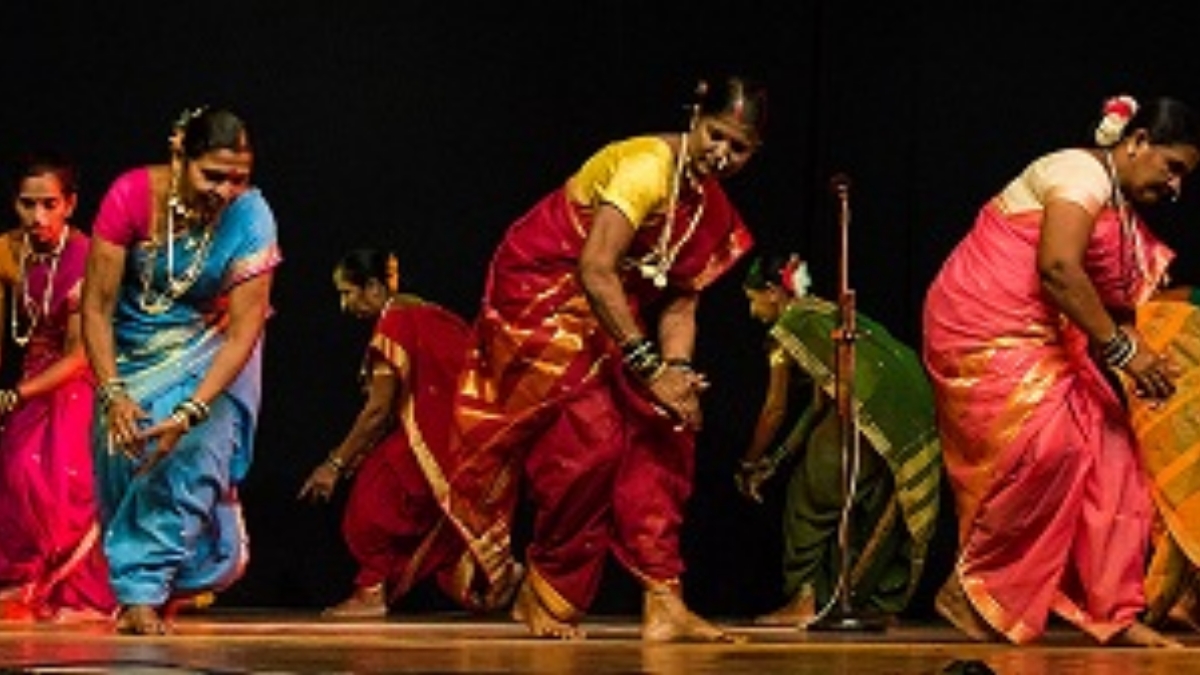Fugdi folk dance is mainly the dance of Konkan women of Goa. Only women participate in this dance. This dance is performed during festivals and religious activities.
It is also performed during harvest season when women find themselves at leisure. This dance also represents women’s break from their daily work. They dance to entertain themselves to enjoy a little break from their daily chores such as water fetching from the river.

Fugdi Folk Dance History
There is no evidence showing where and when this dance originated. Our guess is that when women used to go long distances to fetch water they came out with something to entertain themselves and it became a Kalshi fugdi folk dance.
In the village, elders ask women never to keep the pitcher empty. The story behind it is that the goddess Laxmi visits every house after completing her daily chores and drinks water from the pitcher. If the pitcher is empty, the goddess will not be able to quench her thirst.
Dance Performance
The main prop used in this dance is a Kalshi or water pitcher. It has a special meaning in village women’s lives as they use it every day for almost every household chore. Fetching water and then cooking, cleaning, and watering plants with it is their daily routine.
The women start this dance by lighting a Diya in front of the Tulsi plant. They ask deities to bless the place. In the songs used in Fugdi dance, women sing about deities bringing them sarees, jewellery, flowers, and bangles in their blessings. Deities also bless them with a happy reunion with their husbands.
The dance consists of the steps of everyday motion such as cleaning the house, washing clothes, etc. Women dance while holding each other’s hands and moving in a circular motion. The women also bang their bangles against copper pots while dancing. In Konkani, these pots are known as “Kalshi”. The Kalsi or Water pitcher symbolizes the womb and blowing in it means giving life to it.
Fugdi Folk Dance Costume
Hindu women wear colourful sarees while Christian women wear red checked sarees with a knot on their right shoulder. They also tie a white dupatta around their waist. Women did not change into special clothes to perform this dance initially. They used their work clothes. Nowadays they use special clothes for the Fugdi dance.

Music and Instruments
The dance does not involve any instrument. It only has music and songs sung by dancers while performing. While dancing women make special noises such as foo, fu. These noises automatically come out as dancers blow in the water pitchers. This is the reason why the dance is named Fugdi.
The dance starts with slow movements that pick up speed as the performance continues.
Katti fugdi is another dance form of fugdi in which women dance with coconut shells in their hands. There are 27 known forms of fugdi dance. Some are Girki, Rahat, Zimma, Cycle, Karvar, Kombda, Ghuma, Bus Fugdi, and Pakhwa.


